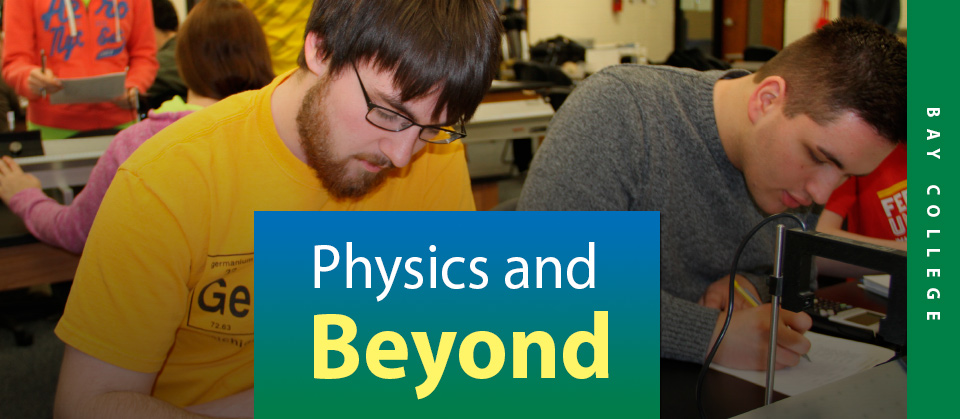
 Any college student planning to major in one of the physical sciences – for example, Physics, Chemistry, Geology, or Engineering (Electrical, Civil, Mechanical) – must take the General Physics I and II courses. As most students who have had these courses can attest to, physics can be tough!
Any college student planning to major in one of the physical sciences – for example, Physics, Chemistry, Geology, or Engineering (Electrical, Civil, Mechanical) – must take the General Physics I and II courses. As most students who have had these courses can attest to, physics can be tough!
If these courses are taken at a large university, the overall difficulty may be increased significantly. Such factors as large class size (often in the 200-300 student range), lack of one-on-one time with the professor for homework help, and graduate-student teaching assistants who often do not know the material much better than the undergraduates, all contribute to making the material difficult to understand and absorb. Many students fail out of their programs or are forced to take physics more than once when faced with the daunting task of surviving the General Physics courses under these circumstances.
Bay College offers calculus-based General Physics I and II for engineering majors and trigonometry-based General Physics I and II for nursing/medical students or those in technology programs such as computer-aided design.
Of particular advantage to beginning a physical science program at a smaller community college, students have the opportunity to take physics in a small classroom setting. At Bay College, the physics classes are small (10-20 students) and Physics Professor Matthew Krynicki is available to students for extra help on homework most hours of the day.
Bay College offers calculus-based General Physics I and II for engineering majors and trigonometry-based General Physics I and II for nursing/medical students or those in technology programs such as computer-aided design. These courses also contain a full laboratory component, which is generally required by the 4-year institutes students are transferring to. In addition, students attending Bay College that are planning to major in Engineering at Michigan Technological University in Houghton, MI can get a head-start on their program while at Bay by taking the Statics and Dynamics courses taught by Professor Krynicki. And students who need a science class to fulfill their Education-program requirements but do not have the math skills to take physics can take Professor Krynicki’s General Astronomy course. All in all, Bay College is an ideal setting for students facing the intimidating challenge of learning physics.
Spotlight on Faculty: Matt Krynicki
Lights in the Night Sky – Understanding the Aurora Borealis
When Matt Krynicki was studying for his Bachelor’s degree in Physics at Wayne State University in Detroit, MI, he had an interest in many branches of physics – quantum mechanics, astronomy and astrophysics, solid state physics. When the opportunity to take a course in plasma physics – the study of ionized gases (the 4th state of matter) and a branch of physics he was unfamiliar with – presented itself, he jumped at the chance.
As his graduation neared, Matt decided he wanted to continue studying physics and began applying to graduate schools. The University of Alaska Fairbanks (UAF) offered the opportunity to study plasma physics in greater detail through the study of Earth’s upper atmosphere and near-space environment, and when he found out he was accepted to their Ph.D. program, he knew his chance for great adventure was upon him.
Living in Fairbanks, AK for ten years while completing his Ph.D., Matt had the opportunity to travel throughout the vast northern landscapes of Alaska and Canada and also to view and study the Aurora Borealis on a regular basis – the spectacular visual display also known as the Northern Lights.
“The Earth in essence is a huge bar magnet,” explains Matt, “which funnels some of the charged particles (the solar wind) emanating from the Sun into the Earth’s near-space environment, the geomagnetic cavity around Earth we call the magnetosphere. Some of these charged particles make their way into Earth’s upper atmosphere and collide with the oxygen and nitrogen up there. Some of the oxygen and nitrogen molecules give up their excess energy through radiation; that is, the Aurora, which we can see from the ground.”
Nowadays, Matt is teaching the physics, engineering physics and general astronomy courses at Bay College in Escanaba, MI, and it is obvious that his enthusiasm for physics has not wavered. “I am fairly new to teaching so I am still learning the nuances of how to help others absorb this material, but I try to bring my excitement for the material into the classroom everyday. Though many of my students will not use physics much through the rest of their lives and careers, their problem-solving skills are being improved, whether they like it or not! My one hope is that I am helping students to have a better appreciation of how basic physics shows up everywhere in their everyday lives.”

